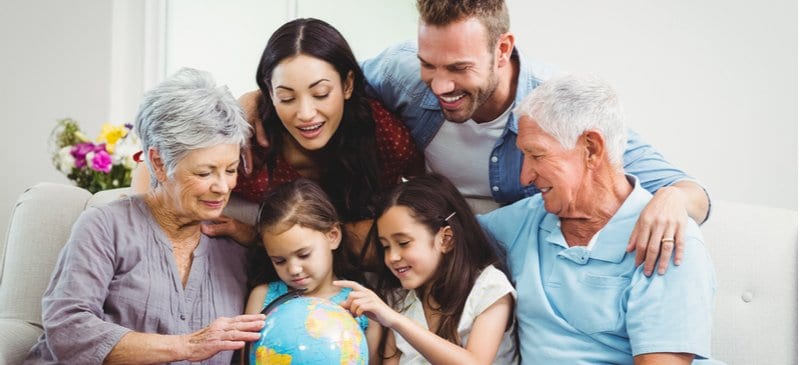This Dr. Axe content is medically reviewed or fact checked to ensure factually accurate information.
With strict editorial sourcing guidelines, we only link to academic research institutions, reputable media sites and, when research is available, medically peer-reviewed studies. Note that the numbers in parentheses (1, 2, etc.) are clickable links to these studies.
The information in our articles is NOT intended to replace a one-on-one relationship with a qualified health care professional and is not intended as medical advice.
This article is based on scientific evidence, written by experts and fact checked by our trained editorial staff. Note that the numbers in parentheses (1, 2, etc.) are clickable links to medically peer-reviewed studies.
Our team includes licensed nutritionists and dietitians, certified health education specialists, as well as certified strength and conditioning specialists, personal trainers and corrective exercise specialists. Our team aims to be not only thorough with its research, but also objective and unbiased.
The information in our articles is NOT intended to replace a one-on-one relationship with a qualified health care professional and is not intended as medical advice.
Sällbo’s Multigenerational Living: A Place to Combat Loneliness
October 8, 2020

A new social experiment involving 72 people in Sweden is shining light of creative ways to beat loneliness. The “collective living” experiment takes place in Helsingborg, a tiny port city in southern Sweden. It’s called Sällbo — a combination of the words “sällskap,” which means companionship and “bo,” which means living — where they embrace multigenerational living.
What have we learned from this type of multigenerational living? Sällbo, in particular, was created as a space where generations and cultures meet, with a focus on the social aspects of living.
Since the progress of Sällbo has been reported, other municipalities are considering implementing similar multigenerational living concepts, including facilities in Canada, Germany, Italy and South Korea.
What Is Multigenerational Living?
The goals of the project were to help combat loneliness and promote social cohesion, which was promoted by giving residents incentives and space for daily interactions.
At Sällbo, there are 51 apartments within a four-floor refurbished retirement home. More than half of the 72 people living there are over 70 years old, and the rest are between the ages of 18 and 25.
Before these residents were selected to be part of the multigenerational living experiment, they were interviewed to ensure that there’d be a mix personalities and values in the residence.
To be part of the program, each resident had to sign a contract that promised she or he would spend at least two hours per week socializing with neighbors.
Beyond simply living in the same building, Sällbo offers various group activities that take place in communal areas. From gardening groups to cooking classes, painting and yoga, there are plenty of opportunities for residents to explore new hobbies and activities together.
Benefits
1. Combats Loneliness
We know that loneliness can be even more hazardous to our health than obesity or smoking 15 cigarettes a day, as shown in research by the American Psychological Association.
One in five Americans reports sometimes or always feeling lonely or socially isolated, even before the pandemic. And reports show that 43 percent of seniors feel lonely on a regular basis.
The idea behind multigenerational living is that elderly residents socialize regularly with younger residents in order to combat loneliness and isolation. This fosters a sense of community, thereby improving the overall health of all participants, especially older adults.
2. Promotes Inclusivity
This social experiment in Sweden involved people of many ages, races and religions. Sällbo residents come from different backgrounds and have different values, yet they are able to live together and socialize civilly, as one community.
This sense of “togetherness” promotes inclusivity and acceptance — two mindsets that can improve the mental, emotional and even physical health of the participants. In fact, there are many designated “togetherness” areas at Sällbo in order to promote interactions among residents.
3. Provides Community Support
Reports show that a sense of community helps residents thrive. This occurs because people feel a greater sense of security, trust and belonging when they are part of a larger community.
This idea of connection in Sällbo was made obvious after the COVID-19 outbreak, as residents supported each other in this extremely difficult time. During the pandemic, some residents volunteered to run errands for those who were uncomfortable being in public places.
4. Improves Health
Loneliness and social isolation can lead to major health issues, including depression, trouble sleeping, fatigue, suppressed immune system and inflammation. Not only is this concept of multigenerational living potentially beneficial to your mental and emotional health, but it may greatly impact your physical health, too.
Research published in PLos One shows that loneliness is adversely associated with physical and mental health and a healthy lifestyle.
How It Compares to Solo Living
It turns out that younger people who live alone are just as lonely as older adults. The feeling of social isolation can have devastating impacts on our mental, emotional and physical health.
This is why loneliness has actually been called a “new epidemic.”
Living in any community that promotes building relationships and togetherness is beneficial for residents. Residents in Sällbo are encouraged to close their apartment doors and get some quiet time when needed, as well, to further promote health.
Downsides
Multigenerational communities were actually much more common in the United States many years ago. It wasn’t uncommon for each generation of a family to live together and take care of each other.
Over time, each generation was able to afford living on its own and the sought independence, which lead to the typical living conditions that you see today.
A potential downside of multigenerational living can be a lack of space so people can get the quiet time or rest they need. If space is available for each resident, as is the case with Sällbo, this isn’t an issue.
Another factor is maintaining normal and appropriate noise levels and disturbances. When you get multiple generations in one living space or residence, this may become an issue.
The key is to keep the rules or guidelines very clear so each age group can enjoy social relationships while being respectful of their neighbors.
Conclusion
- Sällbo is a successful multigenerational living residence in Sweden. It was organized as a social experiment that has taught us about the benefits of having people of different ages, races and cultures living together.
- Benefits of multigenerational living include its ability to reduce loneliness and isolation, promote inclusivity and a sense of community, and even support overall health.











